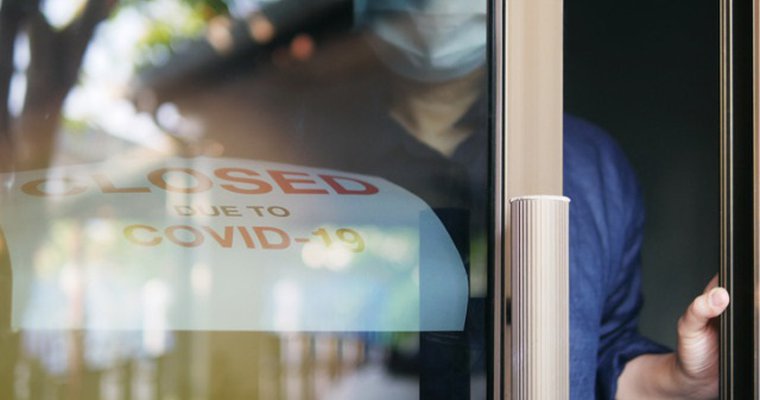Pat Perdue, host of the podcast, "Pat Perdue's Customer Experience Podcast," and founder of Pat Perdue Brand Management, and Ann-Marie Clendenin, a retail leader with expertise on strategic application of technology to drive the client journey, share insight on what brands need to do differently to thrive in this new retail landscape.
Since Covid-19 all but shut down traditional brick-and-mortar in-store shopping, what used to make a great retail customer experience has dramatically shifted. Gone are the days when just a "good enough" (but not great) customer experience was enough to keep our customers engaged.
In this post-Covid-19 retail economy, a stellar in-store experience often means getting the customer in and out as quickly as possible. And with online making it easier than ever for customers to take their business elsewhere, each interaction must be carefully designed to deepen the customer/brand relationship. In this retail landscape, brands that recognize what needs to change, and are ready to invest in the right technology, people and processes to drive those changes, can potentially transform transactional customers into enthusiastic clients and ensure long-term brand viability even in these unpredictable times.
By taking a closer look at pre COVID-19 retail customer experience best practices, a clear pattern of emerges for what brands need to do differently to thrive in this new retail landscape.
Transactional exchanges vs. meaningful, authentic connections
Before Covid-19: Phone calls to your brand (using the toll-free number on the website) might have gone to a contact center not dedicated to the experience of your clients. While conversations were transactional (order tracing, stock availability questions, return policy), they rarely expanded into the enthusiastic brand-ambassador experience your customers may have had when they visited your brick-and-mortar store. The same can be said for web chat.
After Covid-19: Each phone call is an opportunity to spend focused, dedicated time with your client, deepening your client-brand relationship. This might require ditching the contact center and having calls go directly to carefully recruited, specially trained brand ambassadors who not only live, eat and breathe your brand, but are also trained to engage clients in a meaningful, authentic way. Adding videoconferencing to the mix and placing your brand ambassador in a showroom (which could even be a retail location) allows that person to visually show more options, potentially upsell the client, meaningfully convey their enthusiasm for the brand and products, and build a personal, long-term connection with the customer.
Brand reputation
Before Covid-19: While brand reputation was important, the attraction of a sale could often be relied upon to generate quick, spontaneous purchases.
After Covid-19: Customers have more time, and potentially inclination, to research the brand before making a purchase. Your customers are not only buying the outfit (for example), but they're also buying into your brand's corporate social responsibility initiatives, its diversity and inclusivity in its leadership team, and its other policies around social justice. Making your brand's inclusivity programs, fair hiring practices and other CSR initiatives a key part of your messaging ensures that your customers will be comfortable buying both what you're selling and what you stand for.
Fractured conversations vs. omnichannel
Before Covid-19: It was enough to have outstanding brick-and-mortar locations and an "outsourced" contact center that would look after phone calls, emails, web chat and social media. The problem was that each of these channels was typically disconnected from the other, with content or "memory" not shared from one channel to another. While clients might be able to call, email and connect on social media, these conversations were often completely separate. It's like if you called or texted your friend about seeing a movie (before Covid-19, of course), and the next time you saw them they had absolutely no recollection that the call had ever taken place. While in regular life that would be completely weird, for retail, that's how it was done.
The result was the customer often had to retell their story with each conversation on a different channel. This disjointed customer experience was often remedied by the customer coming into the store. It might have been "good enough" pre COVID-19, but in these days of higher competition for each customer contact, it just won't cut it.
After Covid-19: With brick-and-mortar no longer a viable channel for both sales and customer engagement, omnichannel is a crucial element to your brand's success. Seamless integration between web chat, social media, phone and video allows any issues that exist to be resolved quickly so you can move on to more high-value conversations that strengthen your brand-client relationship.
Investing in the right areas
Meaningfully adapting to the post-Covid-19 landscape requires that brands recognize that what was good enough a year ago isn't good enough today. If brands are willing to invest in the right areas, such as focused recruiting, staff training and technology that meaningfully connect with the right people, the retail landscape provides opportunities to grow their relationships with their customers, and grow their bottom line. Brands that fail to adapt to this new landscape risk the predictable outcome of losing customer relevance. And once that happens, it's nearly impossible to regain it.
Pat Perdue is producer and host of the podcast, "Pat Perdue's Customer Experience Podcast," and CEO/founder of Pat Perdue Brand Management. Ann-Marie Clendenin is an executive retail leader with expertise on the strategic application of technology to drive the client journey and increase sales. She has worked with top brands including Aeropostale, Kate Spade and most recently at Aritzia where she served as president, US Retail.
Article Source: https://www.retailcustomerexperience.com/blogs/retail-customer-experience-in-a-post-covid-19-world-2/





